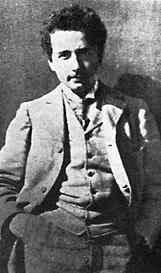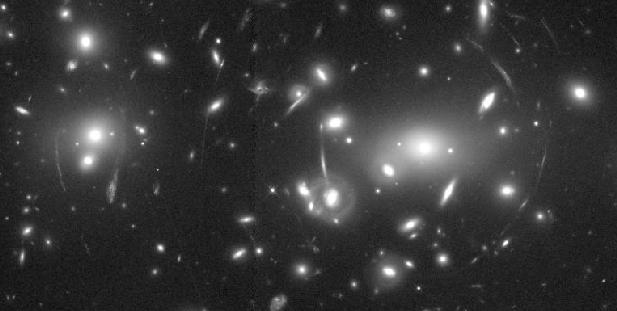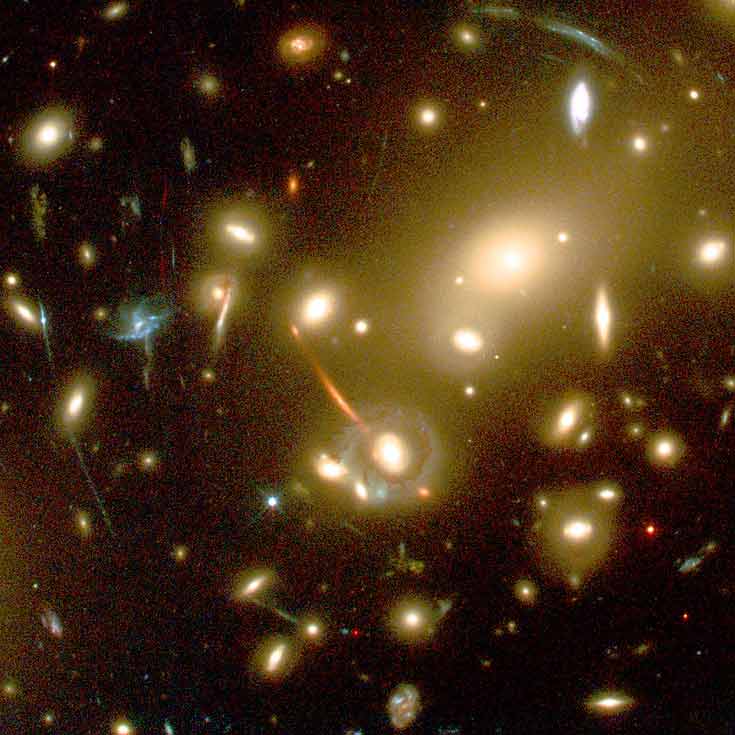![]()
![]()
Isaac Newton (1642-1727) in 1687 in his Principia described the properties of the force needed to cause heavenly bodies to move in ellipses in accord with Kepler's laws. Newton's analysis of gravitational forces unified the physics of the heavens with that of projectiles and falling objects on earth. Newton's three laws of motion and his fluxions procedure (now call calculus) established the foundation for understanding all other forces in the universe.
 Albert Einstein (1879-1955) seems to have been driven to gain his own understanding of the universe rather than blindly accept traditional explanations from others. Often ignoring assigned school work resulted in poor academic grades followed by failure to find well paying employment for both Albert and his study mate whom he later married. Eventually a day job in the patent office allowed Albert time to ponder and discuss the essence of the laws governing the universe with wife and fellow physicist, Mileva and their friends. In 1905 Albert submitted three papers which clarified core understanding: (Mileva may have been a silent coauthor)
Albert Einstein (1879-1955) seems to have been driven to gain his own understanding of the universe rather than blindly accept traditional explanations from others. Often ignoring assigned school work resulted in poor academic grades followed by failure to find well paying employment for both Albert and his study mate whom he later married. Eventually a day job in the patent office allowed Albert time to ponder and discuss the essence of the laws governing the universe with wife and fellow physicist, Mileva and their friends. In 1905 Albert submitted three papers which clarified core understanding: (Mileva may have been a silent coauthor)
Newtonian physics involves mass, a property of the universe which seems to have several unrelated functions. In Newtons dynamics, F = ma, mass provides the inertia that resists acceleration. But in Newton's law for gravity, F = Gm1m2/d2, mass is the cause of the force. The missing logical connection between inertial mass and gravitational mass has caused some physicists to further ponder the nature of mass and gravity. In 1915 Einstein announced his general theory of relativity replacing Newtonian gravity with curved space. Einstein proposed that mass deforms space so that the shortest distance between two locations would be curved by the attraction of a mass near the pathway. For nearly all situations Einstein's theory made identical predictions to Newton's theory. But Einstein calculated that gravity of the Sun could deflect light from a star nearly behind the Sun by up to 1.75 seconds of arc, less that 1/1000 of a degree, but twice as large as the deflection according to Newton physics.
In 1919 Arthur Eddington journeyed to the island of Principe off the coast of West Africa to photograph on May 29 a total solar eclipse where the moon would block for an extraordinarily long 7 minutes the overpowering sunlight which normally during daytime would obscure the distant stars of the Hyades constellation. It rained every day for the nineteen days prior to the eclipse, but the sky cleared just long enough during the eclipse for Eddington to make one useful photograph of the stars. Compared the eclipse photo with nighttime images of the Hyades showed that the sun had caused a deflection of roughly 1.61 seconds of arc for the stars closest the sun, a result confirming Einstein's theory of general relativity. Eddington's expedition and results made Einstein famous. (Read more about Einstein and a chemical element named for him.)
In this experiment we shall look for the effect of space curvature caused by mass. Light diverging from a star or galaxy behind a large mass which is nearer to us can be bent inwards towards that closer mass resulting in the light falsely appearing to originate from several locations just to the sides of the nearer mass. Often the distance object appears to be warped into an arc centering on the mass causing the bending.
As noted in the previous experiment, light from more distant objects had greater red shift. This allows an observer to determine which objects are closer and which are further away.


The color of the lensed galaxies is a function of their distances and types. The distance of any particular galaxy can be determined from the amount of red shift, (See procedure in previous experiment.) The orange arc is an elliptical galaxy at moderate red shift (z=0.7). The blue arcs are star-forming galaxies at red shifts with z=1 to 2.5. The encircled deep red arcs (and dot) is the star-forming galaxy at about red shift 7 discovered February 2004. The magnification of the natural cosmic gravitational lens
amplified the brightness about 25 times. Located an estimated 13 billion light-years from earth, light from this galaxy originated only 750 million years after the big bang, when the universe was barely 5 percent of its current age. The primeval galaxy was identified by combining the visibility of NASA's Hubble Space Telescope and red shift information from the Keck Telescopes on Mauna Kea, Hawaii.
The lensed galaxies in these photographs are particularly numerous because they are between two mass clumps, in a saddle region which causes quite large magnification.
![]()
next Experiment
to ie-Physics menu
to site menu